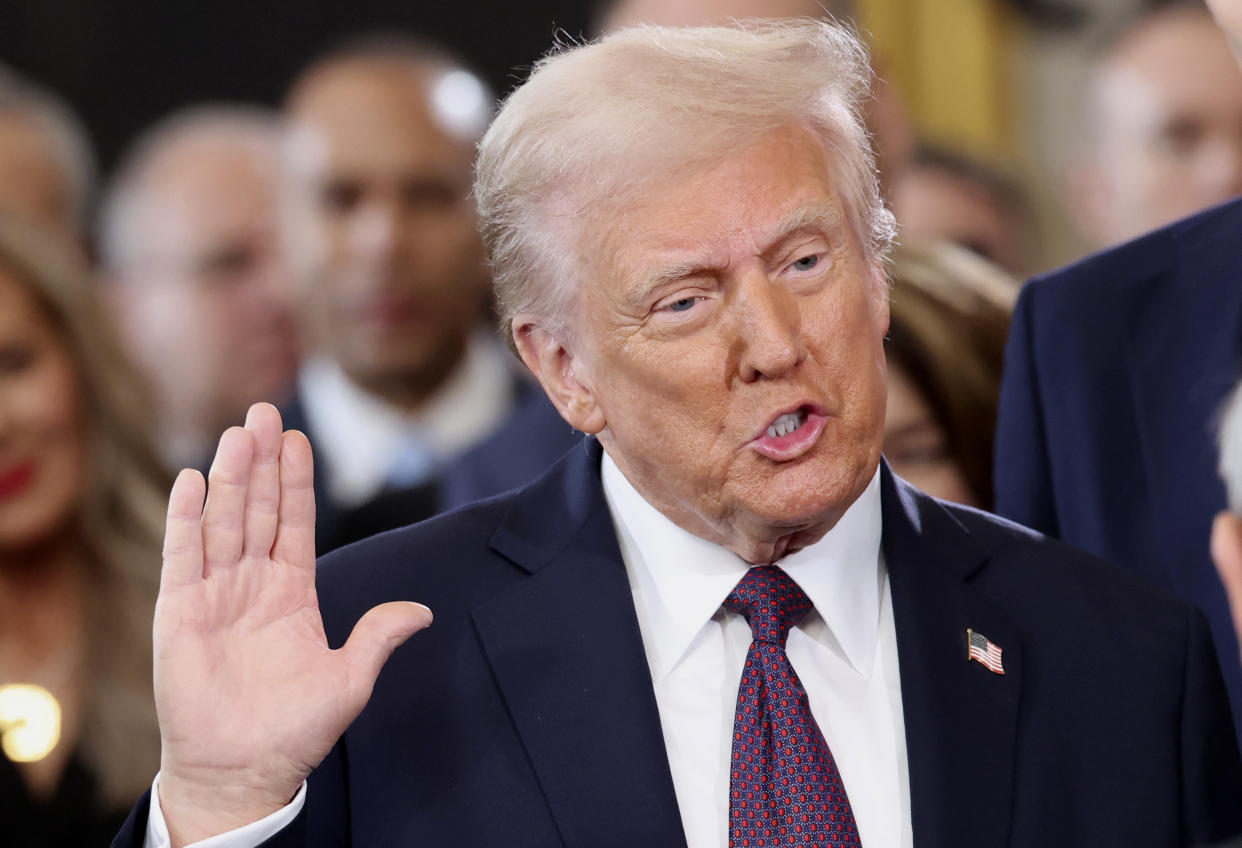
Equal Employment Opportunity Act : Explore the recent changes to the Equal Employment Opportunity Act, including the rescission of affirmative action policies, and understand their implications for employers and employees.
Table of Contents
The Equal Employment Opportunity Act (EEOA) stands as a cornerstone in the pursuit of workplace equality in the United States. Enacted to eliminate discrimination based on race, color, religion, sex, or national origin, the EEOA has undergone significant transformations, especially in light of recent political developments. This article delves into the historical context, recent changes, and the future landscape of equal employment opportunities in the U.S.
Historical Overview of the Equal Employment Opportunity Act
The EEOA was established to enforce federal laws prohibiting employment discrimination. Its inception marked a pivotal moment in the civil rights movement, aiming to provide equal opportunities for all individuals, regardless of their background. Over the decades, the Act has been instrumental in addressing various discriminatory practices in hiring, promotions, and workplace policies.
Executive Order 11246 and Affirmative Action
In 1965, President Lyndon B. Johnson issued Executive Order 11246, which required federal contractors to take affirmative action to ensure non-discriminatory employment practices. This order was a significant step toward promoting diversity and inclusion in the workplace. However, recent political shifts have led to substantial changes.
Rescission of Affirmative Action Policies
On January 22, 2025, President Donald Trump issued an executive order rescinding affirmative action requirements for federal contractors. This move effectively nullified Executive Order 11246, which had been a foundational policy for promoting workplace diversity for six decades. The new order mandates federal agencies to eliminate diversity, equity, and inclusion (DEI) policies and encourages the private sector to follow suit.
Implications for Private Employers
The rescission of affirmative action policies has significant implications for private employers, especially those engaged in federal contracting. Without the mandate to implement affirmative action plans, companies may need to reassess their diversity and inclusion strategies. However, it’s crucial to note that other anti-discrimination laws, such as Title VII of the Civil Rights Act of 1964, remain in effect, prohibiting employment discrimination.
Recent Legal Developments
The Equal Employment Opportunity Commission (EEOC) continues to play a vital role in enforcing anti-discrimination laws. In recent months, the EEOC has filed lawsuits against major corporations for alleged discriminatory practices. For instance, in January 2025, the EEOC sued General Motors and Stellantis for age and sexual harassment discrimination, respectively. These actions underscore the ongoing need for vigilance in upholding equal employment opportunities.
The Future of Equal Employment Opportunity
With the rescission of affirmative action policies, the landscape of equal employment opportunity is poised for change. Employers must navigate this new terrain by focusing on creating inclusive workplaces without the framework of affirmative action mandates. This shift places greater responsibility on individual organizations to proactively prevent discrimination and promote diversity.
Understanding President Trump’s Executive Order on DEI: Implications and Key Changes
On Tuesday evening, January 21, 2025, President Trump issued an executive order titled, “Ending Illegal Discrimination and Restoring Merit-Based Opportunity.” This directive marks a pivotal shift in the federal government’s approach to diversity, equity, and inclusion (DEI) policies within its ranks, as well as for federal contractors. The order revokes several prior executive mandates, including the landmark Executive Order 11246, which had formed the backbone of equal employment opportunity regulations for decades.
This article will delve into the details of this executive order, examining its implications for federal contractors, private sector hiring practices, and broader employment policies. Additionally, we will explore the potential responses from state governments and the private sector, providing a comprehensive analysis of the shifting regulatory landscape.
What Does the Executive Order Say Equal Employment Opportunity Act

The executive order emphasizes a return to merit-based hiring and the elimination of what it describes as “illegal preferences” based on race, sex, or other identity categories. Key provisions of the order include:
- Revocation of Executive Order 11246: This foundational order, issued in 1965, required federal contractors to engage in affirmative action to ensure equal opportunity in their workforce. By revoking it, the new order dismantles decades of regulatory framework promoting DEI initiatives.
- Streamlining Federal Contracting: The executive order calls for increased efficiency and reduced costs in federal contracting. Federal contractors and subcontractors are now required to comply strictly with civil rights laws without engaging in affirmative action or workforce balancing.
- Immediate Changes to OFCCP Activities: The Office of Federal Contract Compliance Programs (OFCCP) within the Department of Labor is directed to:
- Cease promoting diversity initiatives.
- End enforcement of affirmative action requirements for federal contractors.
- Prohibit workforce balancing based on identity categories such as race, sex, religion, or national origin.
- Continuation of VETS and Disabled AAPs: Federal contractors must still comply with legislatively mandated affirmative action programs for veterans and individuals with disabilities.
Impact on Federal Contractors
The executive order signifies a dramatic shift in compliance requirements for federal contractors. Here are the key impacts:
1. Immediate Compliance Adjustments
Federal contractors must pivot away from policies and practices that prioritize DEI in hiring, promotions, and workforce planning. For 90 days following the issuance of the order, contractors may continue to adhere to the regulatory framework in place as of January 20, 2025. However, beyond this grace period, compliance will need to align with the new directives.
2. Workforce Planning Strategies
Contractors will need to reevaluate their workforce strategies to ensure compliance with the new merit-based hiring focus. This may involve:
- Conducting internal audits to identify DEI policies that no longer comply with federal guidelines.
- Shifting recruitment strategies to emphasize individual qualifications and merit.
- Revising training programs to align with the order’s principles.
3. Uncertainty in Audits and Enforcement
While the order did not disband the OFCCP, its role has been significantly redefined. Ongoing audits initiated by the OFCCP under the previous framework may face delays or cancellations, creating uncertainty for contractors. Companies should engage with legal counsel to navigate this transitional phase.
Private Sector Implications
The executive order also encourages the private sector to adopt merit-based hiring practices. While not mandatory for non-federal contractors, the directive may influence broader employment trends:
1. Shift Away from DEI Programs
Private companies, particularly those seeking federal contracts, may scale back DEI initiatives to align with the federal government’s new priorities. This could include:
- Discontinuing unconscious bias training.
- Eliminating diversity metrics from performance evaluations.
- Revising supplier diversity programs.
2. Potential Legal Challenges
The order’s emphasis on eliminating identity-based preferences may expose companies to legal challenges, particularly in states with robust DEI mandates. Organizations should monitor legal developments and seek guidance to ensure compliance with both federal and state laws.
3. Reputational Considerations
Companies may face public backlash for scaling back DEI programs. Balancing regulatory compliance with social responsibility will be crucial for maintaining a positive corporate image.
State-Level Responses
In the wake of this federal policy shift, states with strong affirmative action frameworks may step in to fill the void. California, Illinois, New York, and New Jersey are likely candidates to adopt state-level affirmative action requirements.
1. Adoption of Federal Frameworks
States may choose to codify elements of the federal affirmative action framework into state law, maintaining DEI initiatives for state contractors and public employers.
2. Increased Regulatory Burden
Companies operating in multiple states may face a patchwork of compliance requirements. For example, a federal contractor in California may need to comply with state-level affirmative action mandates while adhering to the federal government’s new merit-based focus.
3. Advocacy and Lobbying Efforts
Business and advocacy groups may influence state responses. Companies should monitor legislative developments and participate in advocacy efforts to shape state-level policies.
Merit-Based Hiring and Title VII Compliance
The executive order’s emphasis on merit-based hiring aligns with the principles of Title VII of the Civil Rights Act of 1964, which prohibits discrimination based on race, color, religion, sex, or national origin. However, there are key considerations:
1. Balancing Non-Discrimination with Diversity Goals
While the order eliminates affirmative action requirements, companies must still comply with Title VII’s anti-discrimination provisions. Employers should:
- Ensure hiring and promotion practices are free from bias.
- Document decisions to demonstrate compliance with merit-based principles.
- Provide training on non-discrimination laws.
2. Avoiding Reverse Discrimination Claims
The elimination of identity-based preferences may reduce the risk of reverse discrimination claims. However, companies should remain vigilant in addressing any allegations of unfair treatment.
Future Outlook
As the regulatory landscape evolves, several questions remain unanswered:
- What Will Replace EO 11246? The executive order does not specify a replacement framework. The administration may leverage the OFCCP to enforce merit-based hiring while addressing perceived issues in DEI programs.
- How Will States Respond? States with strong DEI commitments may introduce new laws to counteract the federal rollback. Businesses must prepare for potential conflicts between state and federal requirements.
- What Are the Long-Term Implications for Workplace Diversity? The shift away from affirmative action may impact workforce diversity, particularly in industries with historical underrepresentation. Companies should evaluate the broader implications of these changes for talent acquisition and retention.
Conclusion
President Trump’s executive order, “Ending Illegal Discrimination and Restoring Merit-Based Opportunity,” marks a significant departure from previous federal policies on diversity, equity, and inclusion. For federal contractors, the order necessitates immediate changes to compliance and workforce planning strategies. The private sector must also adapt to a shifting regulatory environment while balancing legal obligations and social expectations.
As this policy takes effect, businesses should proactively engage with legal counsel, monitor state-level developments, and reassess their DEI programs to align with the new federal priorities. By navigating these changes thoughtfully, organizations can ensure compliance while continuing to foster inclusive and equitable workplaces. visit THENEWSIFY for more news
The Equal Employment Opportunity Act remains a critical safeguard against workplace discrimination. Despite recent policy changes, the fundamental principles of equal opportunity and non-discrimination endure. Employers must stay informed about legal developments and continue to foster inclusive environments that uphold the rights of all employees.









Leave a Reply